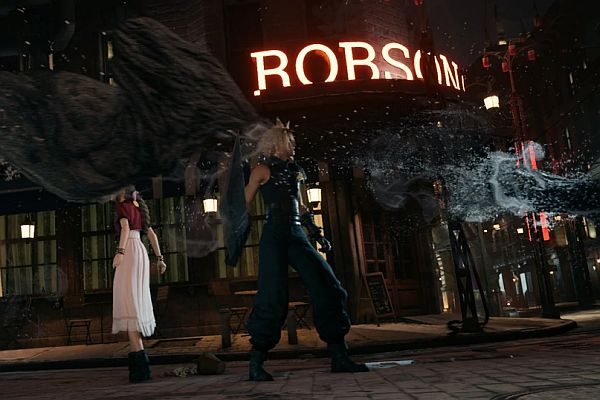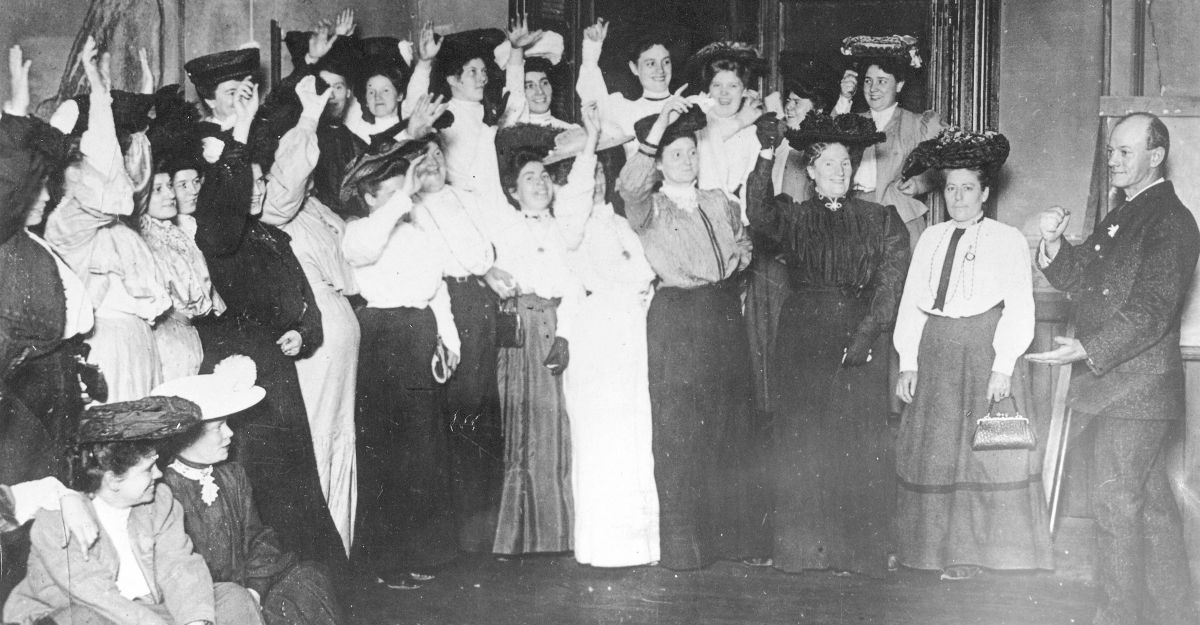Final Fantasy VII, Square Enix’s classic role-playing game, garnered critical praise and fan adoration when it was released in 1997. Its story, about ecoterrorists fighting against a behemoth corporation extracting the life-giving resources of the planet, continues to feel relevant and the ways that the game sprawls outward, incorporating critiques of colonialism, consumerism and indigenous exploitation into its narrative, help it to seem progressive twenty-three years on from its release date. That it became so beloved at a time when videogame technology was progressing in leaps and bounds made it a candidate for a graphically-improved remake almost immediately.
The long-awaited Final Fantasy VII Remake is the first in an anticipated series of games recreating Final Fantasy VII. It spans the first third of the original game and addresses all the same themes, but it is where – and how – it diverges from its source material that makes it worthy of critical examination.
Final Fantasy VII Remake is postmodern in the manner it is linked, inextricably, from its referent image, refusing the would-be critic any chance to assess it on its own terms, and denying even the most observant viewer any steady point of purchase from which to interpret it as a singular object. Final Fantasy VII Remake is so defined by its relationship to its source material that it asks to be read not as an adaptation, but as what the writer Margaret Hillenbrand calls a photo-form.
The photo-form is a genre of intertextual artworks described by Hillenbrand in her 2020 book Negative Exposures. Simply expressed, it refers to artworks that rely on the repurposing or remixing of earlier images so deeply that meaning is not generated through the photo-form alone, but through the relationship between the original and new artworks.
An example offered by Hillenbrand is Chinese photographer Xu Yong’s book Negatives, which reproduces photographs from the Tiananmen Square protests as colour photonegatives. Requiring the viewer to decode familiar images made strange – for instance, by forcing them to stare at a photonegative of a famous Tiananmen Square protest image until it becomes clear that a group of pale floating orbs is actually a mass of human beings undertaking collective political action – generates deeper meaning. In Xu’s work, the effect is to interrogate notions of secrecy in the telling of Chinese history, but the principle can be applied to any adaptive work of art.
The language of spectrality is central to the photo-form. Ghosts from the past lurk behind the curtains of history, calling out and making demands on the present. Just as the past haunts the present, a photo-form is haunted by the ghost of its original artwork. It is fitting, then, that Final Fantasy VII Remake insists upon being spoken of in the language of the ghost.
Almost every image in Remake is a graphically-updated but otherwise faithful recreation of an equivalent image from the original game, but at key moments in the newer game’s narrative, when it looks as though the plot will fork out from the path trod by the original, spectral figures called Whispers appear to keep the newer game on track.
At the game’s climax, these Whispers coalesce into a shrieking, towering monolith that the player has to defeat in order to allow the characters to tread their own path rather than that of the original game. (This is the reason I have abandoned the definitive article when referring to Final Fantasy VII Remake: to paraphrase the videogame critic Tim Rogers, remake is a verb, not a noun).
Criticis such as Joshua Rivera have interpreted the Whispers as a metaphor for rabid fans of the original Final Fantasy VII: dead-eyed, formless beings that violently block novel expression in favour of the predictable retread of an old favourite. It’s a reasonable reading – I played this game during the second Melbourne lockdown, after binging The Sopranos with my partner, and when the I defeated the Whispers and set the game’s characters free from the restrictions they represented I imagined David Chase, curmudgeonly, audience-averse creator of The Sopranos, shedding a solitary, joyful tear. But thinking about the spectral element in this way misses a crucial element. The ghosts aren’t just on the screen, they’re in the game itself.
The original Final Fantasy VII ends on a bittersweet note: in order to save the planet, the heroes’ home is destroyed, and not all of them survive. In their final battle against the Whispers, the heroes of Final Fantasy VII Remake are granted a vision of this future in all of its fiery chaos and are disturbed by what they see.
In grappling with the original, Final Fantasy VII Remake engages not only with the same environmental conflicts at the heart of the original game, but with the failures, mistakes and inactions of those who have come before. In extending the core themes of Final Fantasy VII, it becomes about one of the key aspects of the current climate crisis: reckoning with decades of inaction and understanding the effect that inaction could have on our future. By constructing itself around the tension it feels with its inspiration, Remake has become – against the odds – one of the most politically and socially resonant videogames in recent memory.
Hillenbrand is interested primarily in how the photo-form allows artists to address things that are secret, or at least publicly unacknowledged. That a genre springing from such conditions also provides such an apt critical framework for a mass-market piece of pop culture like Final Fantasy VII Remake attests not only to the depth of the game but to the as-yet unmined critical potential of the photo-form. In an era of digital reproduction, when Cormac McCarthy’s observation that ‘books are made out of books’ is stretched almost to breaking point, it can be easy to discard works of adaptation and remix culture as postmodern simulacrum, either meaningless or uninterpretable. The photo-form provides a way for us to understand this art, rather than discard it.
Final Fantasy VII Remake doesn’t feel revolutionary in the same way that the original does. This was released during period of technological transition, when developers were moving away from cartridges and towards CDs, experimenting with different types of media. Remake is fundamentally different. It has not revolutionised game mechanics or video game story telling conventions. It is, instead, most interesting in the way it is defined by its relationship to the past. History whispers demands to Final Fantasy VII Remake, and the game creates meaning in the ways it responds.



